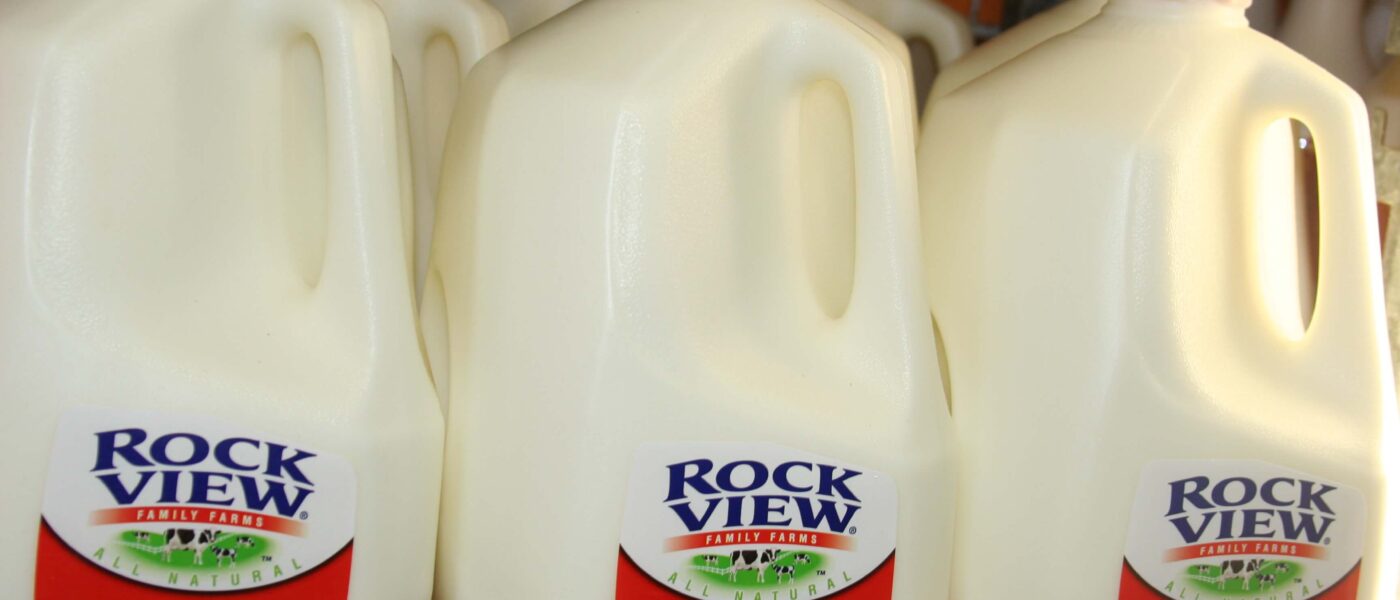Discovering the Best Gallon of Milk: A Comprehensive Buyer’s Guide
Introduction
Have you ever thought about the humble gallon of milk in your refrigerator? This unassuming container holds a wealth of history, science, and cultural significance that often goes unnoticed daily. From the moment it leaves the farm to when it graces our breakfast tables, a gallon of milk embarks on a fascinating journey that touches upon various aspects of our society.
Whether you’re a die-hard dairy enthusiast or someone exploring alternative milk options, there’s no denying this beloved beverage’s enduring presence and importance.
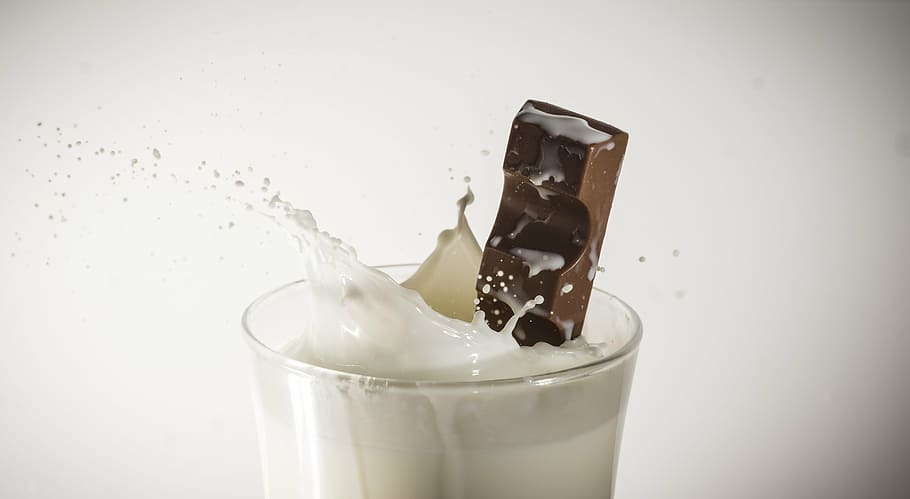
From the nutritional value packed into every sip to the environmental impact of its production, we’ll leave no stone unturned.
What is a Gallon of Milk?
That’s an easy phrase to utter when we say “a gallon of milk,” but have you ever taken the time to consider what it really means? Let’s dive into the details and unravel the mystery behind this seemingly simple concept.
Defining a Gallon of Milk
One popular unit of measurement for liquids is a gallon, and in the United States, it refers to the US liquid gallon. Specifically, one US liquid gallon equals 3.785 liters or approximately 128 fluid ounces. This standardized unit allows for consistent measurement and understanding across the dairy industry and beyond.
Standard Measurements for a Gallon of Milk
When you purchase a gallon of milk from your local grocery store, you can expect it to adhere to the following standard measurements:
- Volume: 1 US liquid gallon (3.785 liters)
- Weight: Approximately 8 pounds (3.6 kilograms)
It’s crucial to remember that due to variations in density and fat content, these measurements may fluctuate slightly depending on the particular type of milk (whole, low-fat, skim, etc.).
Gallon of Milk Container Types
Generally, a gallon of milk is packed in one of three types of common containers:
1. Plastic Jugs: These lightweight, transparent containers are the most common and convenient option for storing and transporting milk. They are designed to be sturdy, leak-proof, and easy to handle.
2. Cartons: Made from paperboard or a combination of paperboard and plastic, cartons offer an eco-friendly alternative to plastic jugs. They are often seen as more aesthetically pleasing and can be easily recycled.
3. Glass Bottles: Although less standard in modern times, glass bottles were once the standard for milk packaging. They provide a nostalgic touch and are often favored by those seeking a more traditional milk-drinking experience.
Each container type has unique advantages and drawbacks, catering to different consumer preferences and environmental considerations.
Whether you’re reaching for a plastic jug, a carton, or a classic glass bottle, a gallon of milk represents a standardized and widely recognized unit of measurement. Understanding the nuances behind this simple phrase can shed light on the intricate details that go into ensuring consistency and quality in the dairy industry.
History and Origin of the Gallon of Milk
A gallon of milk travels through millennia in a fascinating story that is entwined with the development of human civilization. From humble beginnings in ancient times to the modern, industrialized processes we know today, the story of how this unassuming liquid found its way into our lives is worth exploring.
Ancient Roots
Milk has been a part of human sustenance for thousands of years, with evidence of dairy consumption dating back to 8000 BC. Back then, milk was mostly made from domesticated animals like sheep, goats, and cows. It was frequently drunk raw or fermented to make a variety of dairy products.
However, the concept of standardized measurements for milk was yet to be a reality. It was in the rise of more advanced civilizations that the need for consistent units of measurement emerged.
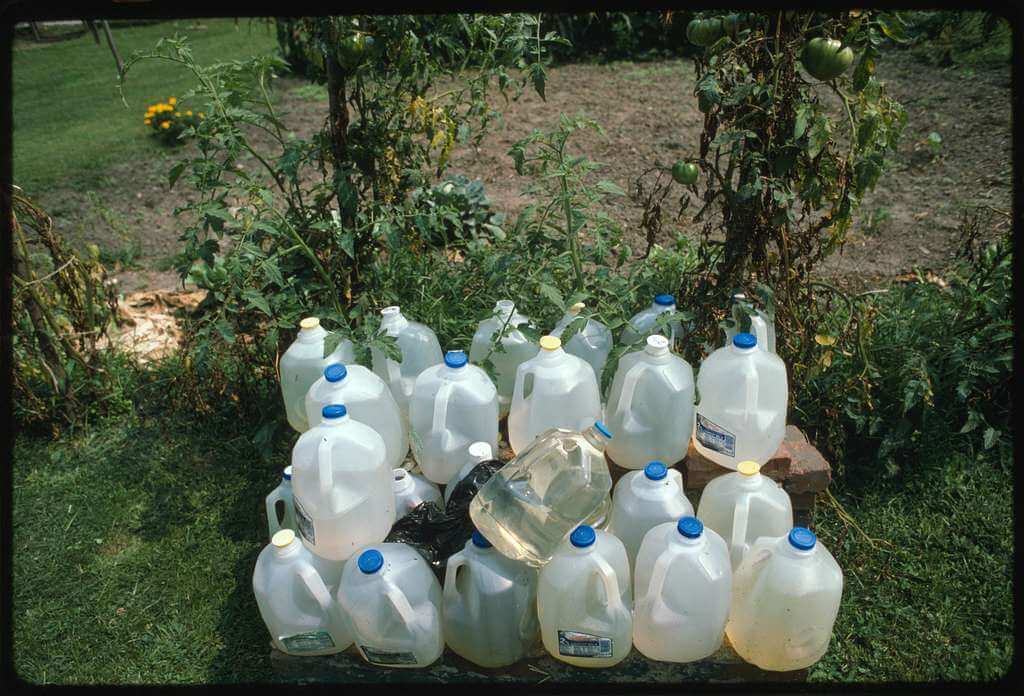
The Birth of the Gallon of Milk
The word “gallon” can be traced back to the ancient Greek word “γαυλός” (gaulós), which referred to a type of vessel used for carrying liquids. This term eventually made its way into Old French as “galon,” and eventually into English as “gallon.”
The earliest known use of the gallon as a unit of measurement dates back to the 13th century in England. The amount of liquid that could be held in a cylindrical container with a 4.5-inch diameter and a 6.75-inch height was the definition of a gallon at the time.
Over time, the definition and standardization of the gallon evolved, with different regions and countries adopting their variations. It was in the 19th century that the US gallon, as we know it today, was officially defined and adopted.
The Evolution of Milk Packaging
When dairy farming first began, milk was usually sold and delivered in plain wooden or metal pails, or it was sometimes sold straight to customers from the farm. However, as demand for milk grew and distribution networks expanded, the need for more efficient and hygienic packaging solutions became apparent.
The introduction of glass bottles in the late 19th century revolutionized the milk industry. These reusable containers allowed for safer transportation and storage while providing a convenient way for consumers to purchase and store milk.
As technology advanced, plastic and paperboard containers gradually replaced glass bottles, offering lighter, more cost-effective, and disposable options. Today, the gallon of milk is most commonly found in sturdy plastic jugs or paperboard cartons, ensuring freshness and ease of handling.
Significance of the Gallon as a Standard Unit
The establishment of the gallon as a standard unit for measuring milk played a crucial role in the growth and standardization of the dairy industry. Providing a consistent benchmark enabled accurate pricing and fair trade practices and ensured that consumers received the exact quantity they were paying for.
Moreover, the gallon’s universally recognized status facilitated communication and understanding among farmers, processors, distributors, and consumers, fostering a more efficient and transparent supply chain.
As we sip on our gallon of milk today, we can appreciate the rich history and evolution that has brought this simple pleasure to our tables. From ancient traditions to modern innovations, the gallon of milk is a testament to human ingenuity and our enduring quest for efficiency, quality, and sustenance.
Nutritional Value
A single gallon of milk packs a powerful nutritional punch, making it an essential part of a well-balanced diet. Let’s dive into the various nutrients found in this beloved beverage and explore how they contribute to our overall Health and well-being.
Macronutrients
1. Protein: About 128 grams of high-quality protein, or all the necessary amino acids our bodies require for growth, repair, and maintenance, may be found in a gallon of whole milk.
2. Carbohydrates: While milk is not a significant source of carbohydrates, a gallon contains around 192 grams, primarily in the form of lactose (milk sugar).
3. Fat: The fat content varies depending on the type of milk. A gallon of whole milk contains around 128 grams of fat, predominantly saturated fats, while low-fat and skim milk have reduced fat levels.
Micronutrients
A good source of several important vitamins and minerals, such as the following, is milk:
- Calcium: A gallon of milk provides around 3,000 milligrams of calcium, vital for maintaining strong bones and teeth and supporting muscle and nerve function.
- Vitamin D: This fat-soluble vitamin aids calcium absorption and bone health. A gallon of fortified milk typically contains around 600 IU of vitamin D.
- Vitamin B12: About 18 micrograms of vitamin B12 can be found in a gallon of milk, which is necessary for the production of red blood cells and neurological function.
- Riboflavin (Vitamin B2): Involved in energy production and red blood cell formation, a gallon of milk offers around 4.5 milligrams of riboflavin.
- Phosphorus: Crucial for bone health and energy metabolism, a gallon of milk contains approximately 2,400 milligrams of phosphorus.
Comparison of Different Milk Types
While whole milk is the most nutrient-dense option, other varieties cater to different dietary needs and preferences:
| Milk Type | Fat Content | Calories (per gallon) | Suitable For |
| Whole Milk | Around 8 grams per cup | 2,400 | General population |
| Low-fat (1%) | Around 2.4 grams per cup | 1,920 | Those looking to reduce fat intake |
| Skim (Fat-free) | Negligible | 1,440 | Those following a low-fat or fat-free diet |
| Plant-based (e.g., almond, soy) | Varies by type | Varies by type | Lactose intolerant, vegan, or those with milk allergies |
It’s important to note that while plant-based milk alternatives offer variety, they may provide a different nutrient profile than cow’s milk, especially regarding protein, calcium, and vitamin content.
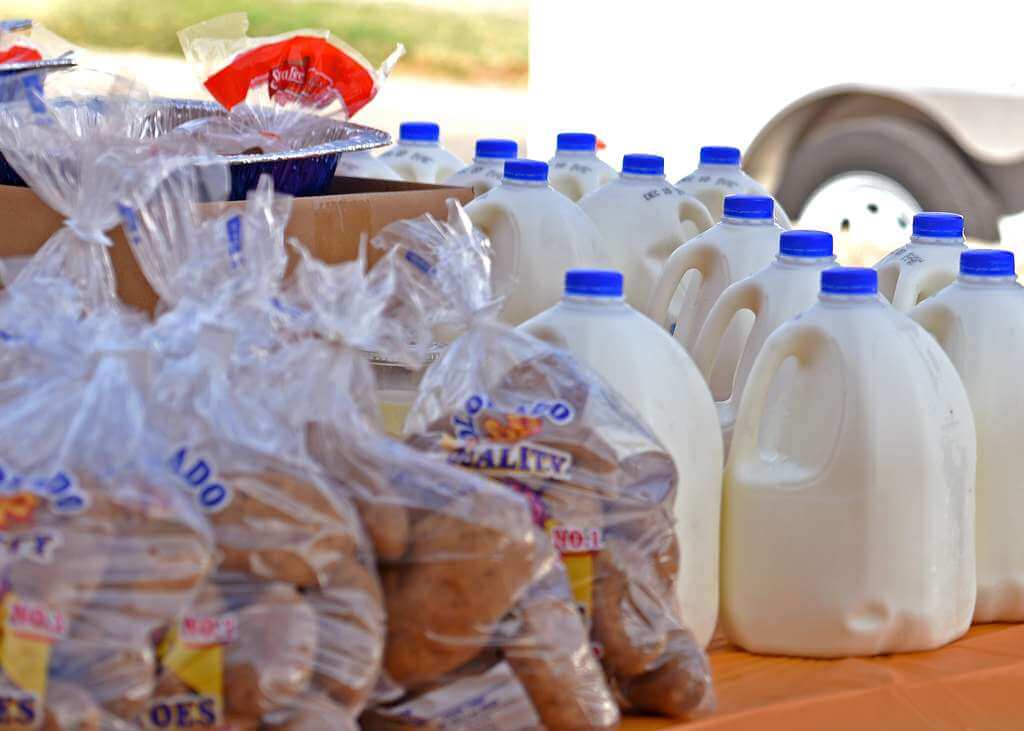
Types of Gallon of Milk
Regarding milk, the options available are more diverse than one might initially think. From traditional cow’s milk to many plant-based alternatives, the dairy aisle has something to cater to every taste and dietary preference. Let’s explore the different types of milk and their unique characteristics.
Cow’s Milk
Cow’s milk is arguably the most widely consumed and recognizable type of milk. It can be further categorized based on its fat content:
1. Whole Milk: This variety contains all the natural milk fat, typically around 3.25% milk fat.
2. Low-fat (1%) Milk: As the name suggests, this type contains 1% milkfat, providing a lower-calorie option.
3. Skim (Fat-free) Milk: With all the milkfat removed, skim milk is ideal for those following a low-fat or fat-free diet.
Additionally, cow’s milk can be further processed into various forms, such as condensed, evaporated, and powdered, each with unique applications.
Plant-based Milk Alternatives
For those who are lactose intolerant, vegan, or prefer non-dairy options, a wide range of plant-based milk alternatives are available:
1. Almond Milk: This milk, which is naturally low in calories and high in vitamin E, is made from water and ground almonds.
2. Soy Milk: Soy milk, which is made from soybeans, is a preferred option for lactose intolerant people and vegans. It’s a good source of plant-based protein.
3. Coconut Milk: Extracted from the flesh of mature coconuts, coconut milk offers a rich, creamy texture and a distinctly tropical flavor.
4. Oat Milk: This milk is made by blending oats and water, resulting in a creamy, slightly sweet taste.
5. Rice Milk: Produced from milled rice and water, rice milk is naturally sweet and suitable for those with nut or soy allergies.
Although the flavor, texture, and nutritional makeup of plant-based milk substitutes may vary, they offer a flexible and inclusive choice for people with dietary needs or preferences.
Other Milk Varieties
In addition to cow’s milk and plant-based alternatives, there are several other types of milk derived from different animal sources:
- Goat Milk: Known for its distinct tangy flavor and potentially easier digestibility than cow’s milk.
- Sheep Milk: Sheep’s milk, which is richer and creamier than cow’s milk, is frequently used to make cheese.
- Buffalo Milk: With a higher fat and protein content than cow’s milk, buffalo milk is commonly consumed in some regions of Asia.
There is a milk alternative to suit every palette and dietary necessity, whether you prefer the traditional flavor of cow’s milk, the rich, nutty flavor of almond milk, or the exotic flavor of coconut milk.
Gallon of Milk Production Process
From farm to table, the journey of a gallon of milk is fascinating, involving intricate processes and stringent quality control measures. Let’s explore the step-by-step process of milk production, highlighting the care and attention to detail that goes into ensuring the safety and freshness of this beloved beverage.
Step 1: Dairy Farming
The journey begins on the dairy farm, where cows are carefully raised and cared for. The cows’ diet, living conditions, and overall Health are crucial to the quality and quantity of milk produced.
Milking is typically done twice a day, either manually or through automated milking systems. The udders are cleaned during this process, and the milk is collected in a sterile and temperature-controlled environment to prevent contamination.
Step 2: Transportation to Processing Plant
After milking, the raw milk is quickly cooled and transported to a processing plant in insulated tanker trucks. These trucks are designed to maintain the milk’s temperature, ensuring its freshness and quality during transit.
Step 3: Pasteurization and Homogenization
Upon arrival at the processing plant, the milk undergoes several critical stages:
1. Pasteurization: This process involves heating the milk to a specific temperature (typically around 161°F or 72°C) for a brief period, followed by rapid cooling. Pasteurization is essential for eliminating harmful bacteria and extending the milk’s shelf life without significantly altering its nutritional value.
2. Homogenization: In this step, the milk is forced through small openings under high pressure, breaking the fat globules into smaller particles. This process prevents the separation of cream from the milk, ensuring a consistent texture and taste.
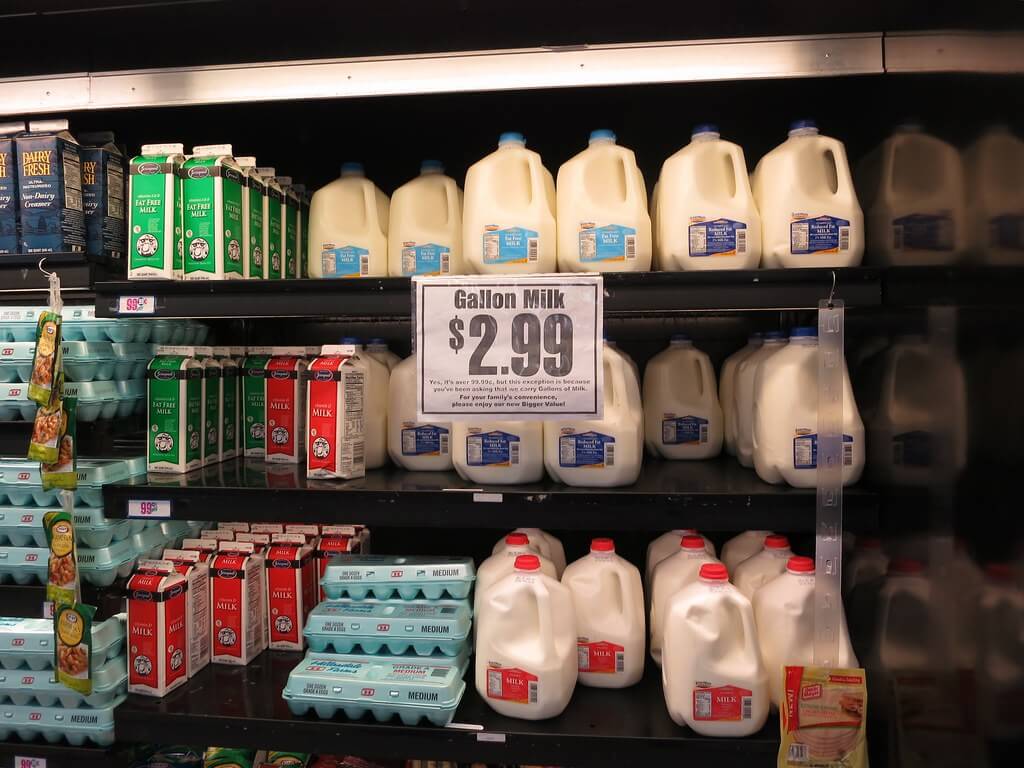
Step 4: Standardization and Fortification
The fat content is adjusted through standardization depending on the desired milk type (whole, low-fat, or skim). This involves either adding or removing cream to achieve the desired fat percentage.
Additionally, specific vitamins and minerals, such as vitamins D and A, may be added to the milk through fortification, enhancing its nutritional profile.
Step 5: Packaging and Distribution
Once the milk has undergone all the necessary processing steps, it is packaged into various containers, such as plastic jugs, cartons, or bottles. These containers are carefully labeled with important information, including the expiration date, nutritional facts, and relevant certifications (e.g., organic, hormone-free).
The packaged milk is then loaded onto refrigerated trucks and distributed to grocery stores, supermarkets, and other retail outlets, where it finally reaches the consumer’s hands.
Throughout the production process, stringent quality control procedures are used, including as routine testing for pathogens, somatic cell counts, and other possible impurities. These measures ensure your milk is safe, fresh, and quality.
Storage and Shelf Life
Your gallon of milk needs to be handled and stored properly to keep its quality and freshness from the time it leaves the processing facility until it is consumed. Let’s explore the best practices for storing milk and understanding its shelf life.
Refrigeration Requirements
Since milk is a perishable good, it must be kept at the right temperature to avoid spoiling. For milk storage, the ideal refrigerator temperature range is 35°F to 40°F (1.7°C to 4.4°C). This temperature range helps to prolong the shelf life of milk by slowing down the growth of microorganisms.
It’s crucial to remember that milk should be kept in the main section of the refrigerator, away from the door, as the temperature there varies more frequently.
Understanding Expiration Dates and “Best By” Labels
You’ll notice a date printed on the container when you purchase a gallon of milk. This date is typically labeled as either an “expiration date” or a “best by” date:
1. Expiration Date: This date indicates the last day the milk should be consumed for safety reasons. It is usually not advised to consume milk after the expiration date because it could be harmful to your health.
2. Best By Date: This date refers to when the milk will maintain its peak quality and flavor. If milk has been properly stored and doesn’t exhibit any indications of spoiling, it can usually be consumed for a few days beyond the “best by” date.
It’s worth mentioning that these dates are based on the assumption that the milk has been stored at the recommended refrigerator temperature. If the milk has been exposed to warmer temperatures, its shelf life may be shortened.
Signs of Spoilage
Even before reaching the expiration or “best by” date, it’s essential to be aware of the signs that indicate milk has spoiled:
- Sour or rancid smell: Fresh milk should have a pleasant, slightly sweet aroma. It is probably spoilt if it smells bad or terrible.
- Thickened or curdled texture: Spoiled milk may appear curdled or have a thickened, lumpy texture.
- Off-flavor: If the milk has an unpleasant, sour, or bitter taste, it’s best to discard it.
- Discoloration: Fresh milk should have a consistent white or creamy color. It may be spoiled if it appears yellow or has any other discoloration.
If you notice any of these signs, it’s best to err on caution and discard the milk to avoid potential food poisoning or other health risks.
By following proper storage guidelines and being vigilant about expiration dates and signs of spoilage, you can ensure that your gallon of milk stays fresh and safe for consumption.
Gallon of Milk in Cooking and Baking
Milk is not just a refreshing beverage; it’s also a versatile ingredient that plays a crucial role in various culinary applications. From rich and creamy sauces to fluffy baked goods, milk adds flavor, moisture, and texture to countless recipes. Let’s explore how milk can elevate your cooking and baking game.
Baking with Milk
A common component in many baked items, milk gives them a soft texture and mouthwatering flavor:
1. Bread: Adding milk to bread dough enhances its softness and shelf life. It’s commonly used in recipes for dinner rolls, sandwich loaves, and sweet breads.
2. Cakes and Cupcakes: Milk is a crucial ingredient in cake batters, providing moisture and richness. It’s essential for creating light and fluffy textures in classic cakes like vanilla, chocolate, and red velvet.
3. Cookies and Bars: Milk helps bind ingredients and contributes to the chewiness and tenderness of cookies, brownies, and bars.
4. Pastries and Pies: From flaky pie crusts to creamy fillings, Gallon of Milk is an indispensable ingredient in many pastry recipes, adding richness and flavor.
Cooking with Gallon of Milk
Beyond baking, milk also plays a significant role in various cooking applications:
1. Sauces and Gravies: Milk is the base for many creamy sauces, such as béchamel, cheese, and gravy, adding richness and body.
2. Soups and Chowders: Milk is a common ingredient in creamy soups and chowders, lending a velvety texture and delicate flavor.
3. Custards and Puddings: Milk is the main component in custards, puddings, and other desserts, providing a smooth and creamy base for flavors like vanilla, chocolate, and caramel.
4. Marinades and Batters: Milk can be used as a tenderizing agent in marinades for meats and as an ingredient in frying batters, helping create a crispy and golden exterior.
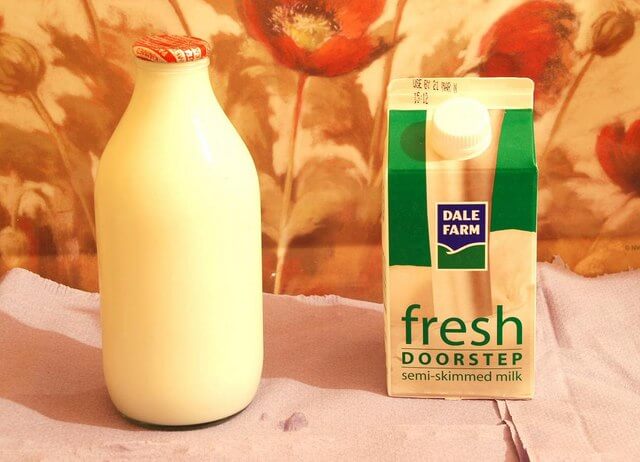
Substitutions and Alternatives
While cow’s milk is the most commonly used variety in cooking and baking, plant-based milk alternatives can be substituted in many recipes. However, it’s important to note that these alternatives’ flavor, texture, and behavior may differ from cow’s milk, potentially affecting the final result.
For those with dietary restrictions or personal preferences, exploring suitable milk alternatives can open up a world of culinary possibilities, allowing you to enjoy your favorite dishes while accommodating your needs.
Milk is a necessary ingredient that gives your recipes depth, richness, and taste, whether you’re making a pot of fluffy pancakes, a rich and creamy soup, or a delectable dessert.
Environmental Impact
As we enjoy the convenience and nourishment provided by a gallon of milk, it’s crucial to consider the environmental footprint associated with its production. While essential for meeting our nutritional needs, the dairy industry also carries significant environmental implications that demand attention and responsible practices.
Greenhouse Gas Emissions
The release of greenhouse gases, mostly carbon dioxide and methane, is one of the key environmental issues associated with the production of milk. Dairy cows are ruminant animals, and their digestive process involves the release of methane, a potent greenhouse gas that contributes to climate change.
Water Usage
Milk production is a water-intensive process, with significant quantities of water required for various stages, including animal hydration, cleaning and sanitation, and feed production. It is estimated that producing one gallon of milk requires approximately 144 gallons of water, considering the entire dairy supply chain.
In regions with limited water resources or during drought, the high water demand of dairy farming can strain local water supplies, potentially leading to conflicts with other water users and ecosystem disruptions.
Land Use and Deforestation
Dairy farming requires substantial land resources for grazing, feed production, and housing livestock. The expansion of dairy operations has contributed to deforestation, habitat loss, and soil degradation in various regions worldwide.
Mitigating the environmental impact of dairy farming and encouraging biodiversity conservation require the use of sustainable land management strategies, such as rotational grazing and the protection of natural ecosystems.
Sustainable Dairy Farming Practices
To address these environmental concerns, the dairy industry has been actively exploring and implementing various sustainable practices:
1. Improved Feed Efficiency: Farmers can reduce methane emissions from cattle and minimize waste by optimizing feed formulations and adopting precision feeding techniques.
2. Manure Management: Gallon of Milk is a great beverage for athletes and active people because of its high-quality protein content, which is essential for both growing and mending muscle tissue.
3. Water Conservation: Implementing water-efficient irrigation systems, recycling water, and reducing water losses can help minimize the water footprint of dairy operations.
4. Renewable Energy: Increasingly, dairy farms are utilizing renewable energy sources, such wind turbines and solar panels, to lessen their carbon impact and dependency on fossil fuels.
5. Grazing Management: Rotational grazing and silvopasture (integrating trees and grazing) can improve soil health, sequester carbon, and enhance biodiversity.
While the environmental challenges associated with milk production are significant, the dairy industry’s commitment to sustainable practices offers hope for a more eco-friendly future. By adopting responsible farming methods, implementing innovative technologies, and promoting awareness, we can enjoy the benefits of a gallon of milk while minimizing its environmental impact.
Health Benefits and Concerns
A gallon of milk is a delicious beverage and a nutritional power house offering numerous health benefits. However, like any food, there are also potential concerns to be aware of when consuming milk. Let’s explore both sides of this coin.
Health Benefits of Milk Consumption
1. Bone Health: Milk is an excellent calcium and vitamin D source, two essential nutrients for maintaining strong bones and preventing osteoporosis.
2. Muscle Function: Gallon of Milk is a great beverage for athletes and active people because of its high-quality protein content, which is essential for both growing and mending muscle tissue.
3. Weight Management: Despite its calorie content, milk can contribute to healthy weight management due to its protein and calcium content, which may increase feelings of fullness and promote fat burning.
4. Blood Pressure Regulation: Certain compounds in milk, such as bioactive peptides and minerals like potassium and calcium, have been associated with maintaining healthy blood pressure levels.
5. Nutrient Delivery: Besides calcium, protein, and vitamins, milk provides a range of essential nutrients like riboflavin, vitamin B12, phosphorus, and niacin, supporting overall Health and well-being.
Potential Concerns and Considerations
While milk offers numerous benefits, there are some potential concerns to be aware of:
1. Lactose Intolerance: A significant portion of the global population experiences lactose intolerance, which is the inability to properly digest the lactose (milk sugar) found in dairy products. Digestionary pain, including gas, bloating, and diarrhea, may result from this.
2. Milk Allergies: A cow’s milk allergy can cause a variety of symptoms in certain people, from minor ones like hives or stomach problems to more serious ones like anaphylaxis.
3. Saturated Fat Content: Significant amounts of saturated fat found in whole milk have been related to an elevated risk of heart disease and other health problems when ingested in excess.
4. Hormones and Antibiotics: Although the dairy industry has put strong controls and testing in place to assure the safety of milk products, there have been concerns around the possible inclusion of hormones and antibiotics in milk.
By being aware of both the benefits and potential concerns, individuals can make informed decisions about incorporating milk into their diets responsibly and sustainably.
Cultural and Traditional Significance
Milk is significant in the cultural and traditional tapestry of many societies worldwide. From ancient civilizations to modern-day practices, this humble liquid has been deeply intertwined with various aspects of human life, serving as a source of nourishment and a symbol of cultural identity and heritage.
Ancient Roots and Mythology
Milk’s cultural significance can be traced back to ancient civilizations, where it was often revered and associated with deities and mythological figures. In ancient Greek mythology, for instance, the Milky Way was believed to have been formed from the spilled milk of the goddess Hera. Similarly, in Hinduism, the divine cow, Kamadhenu, was considered a sacred symbol of nourishment and abundance.
Traditional Dairy Products
Beyond its consumption as a beverage, milk has been transformed into a myriad of traditional dairy products that hold immense cultural significance.
Artisanal cheeses are culinary delicacies celebrated as part of their cultural heritage in countries like France, Italy, and Switzerland. Similarly, traditional dairy products like yogurt, ghee, and butter hold deep cultural roots in regions such as the Middle East, South Asia, and Europe.
Rituals and Celebrations
Milk has also played a pivotal role in various cultural rituals and celebrations. In Hinduism, milk is considered a sacred offering and is often used in religious ceremonies and festivals. During the festival of Diwali, for instance, many households prepare traditional sweets and desserts using milk as a key ingredient.
In certain African and Caribbean cultures, libations of milk are poured on the ground as a way to honor ancestors and deities. Similarly, in some Native American traditions, milk has been used in purification ceremonies and as a symbol of abundance and fertility.
Pastoral Traditions and Symbolism
The image of the pastoral dairy farm has become a symbolic representation of rural life and traditional values in many societies. Paintings, literature, and folklore often depict the idyllic scenes of cows grazing in lush meadows, representing a connection to nature, simplicity, and the bounties of the land.
This romanticized view of dairy farming has been deeply ingrained in cultural narratives, celebrating the hard work and resilience of those who dedicate their lives to providing this essential nourishment.
As we sip on a glass of milk or savor a bite of cheese, we are not only indulging in a delicious treat but also partaking in a rich tapestry of cultural traditions and symbolic meanings woven throughout human history. Milk’s enduring presence in our lives serves as a reminder of our collective past, present, and future, connecting us to the rhythms of nature and the timeless wisdom of our ancestors.
Conclusion: Gallon of Milk
As we reach the end of our exploration into the world of a gallon of milk, we can’t help but be in awe of the depth and breadth of knowledge that this seemingly simple liquid encompasses.
Throughout this journey, we’ve delved into the nutritional value of Gallon of Milk, unpacking its decadent array of vitamins, minerals, and essential nutrients that contribute to our overall Health and well-being. We’ve also explored the diverse types of milk available, catering to various dietary preferences and needs, from the classic cow’s milk to the ever-growing range of plant-based alternatives.
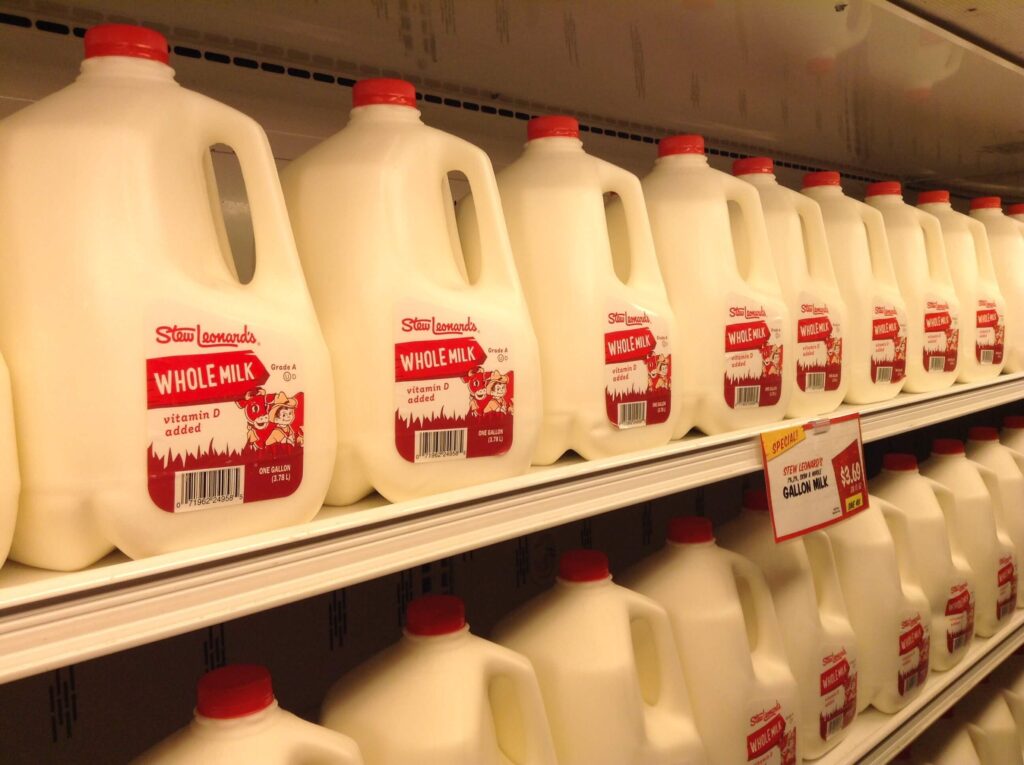
We’ve witnessed the intricate journey of milk production, from the careful nurturing of dairy cows on the farm to the meticulous processing and packaging that ensures its safety and freshness. We’ve learned about the importance of proper storage and handling, enabling us to enjoy the full potential of milk’s flavor and quality.
Furthermore, we’ve discovered the versatility of Gallon of Milk in culinary applications, from rich and creamy sauces to fluffy baked goods, showcasing its ability to elevate and enhance our favorite dishes.
While acknowledging the potential health concerns and considerations associated with milk consumption, we’ve also celebrated its numerous benefits, including its vital role in supporting bone health, muscle function, and overall nutrient delivery.
Beyond its practical applications, we’ve delved into the rich cultural and traditional significance of milk, exploring its deep-rooted symbolism and rituals woven into the fabric of societies across the globe.
So, the next time you reach for a gallon of milk, pause and reflect on its remarkable journey from the rolling pastures to your kitchen table.

